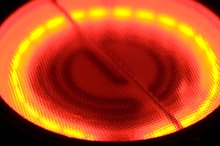What Are Raised Bumps on the Skin?
Most people notice bumps or lumps on the skin at one time or another. Fortunately, most raised bumps on the skin are not a cause for concern and are preventable and treatable with lifestyle changes and medical care.
Features
Raised bumps on the skin might appear white or reddish; the bumps and nearby skin might itch, swell or feel tender to the touch and the bumps might ooze or feel firm, according to the Mayo Clinic and American Academy of Family Physicians.
Identification
What Is the Difference Between Cellulitis & Mrsa?
Learn More
Primary care doctors and specialists such as dermatologists identify raised bumps on the skin by performing a physical exam of the patient. Patients might need to provide a recent history of activities, travel or foods they have eaten.
Causes
Raised bumps on the skin can result from skin problems such as acne, allergic reactions, folliculitis, boils, hives or contact dermatitis. Other causes include medical conditions such as heat exhaustion, viral infections, plantar or genital warts, or skin cancer.
Considerations
What Is the Difference Between Cellulitis & Mrsa?
Learn More
People with pre-existing skin problems such as acne or allergies have a higher risk of developing other skin disorders or infections that can cause raised bumps on the skin, according to the Mayo Clinic.
Treatments
Raised bumps on the skin caused by acne, allergic reactions, folliculitis and other skin conditions are usually treated with medications including antibiotics, antihistamines and hydrocortisone cream. The Mayo Clinic recommends rest and hydration for heat exhaustion while warts and skin cancer require surgical removal.
Prevention/Solution
Keeping the skin clean, wearing loose clothing, staying hydrated during exercise or hot weather and avoiding known allergens can help prevent the development of raised bumps on the skin.
Related Articles
References
Resources
Writer Bio
Jessica Lietz has been writing about health-related topics since 2009. She has several years of experience in genetics research, survey design, analysis and epidemiology, working on both infectious and chronic diseases. Lietz holds a Master of Public Health in epidemiology from The Ohio State University.








